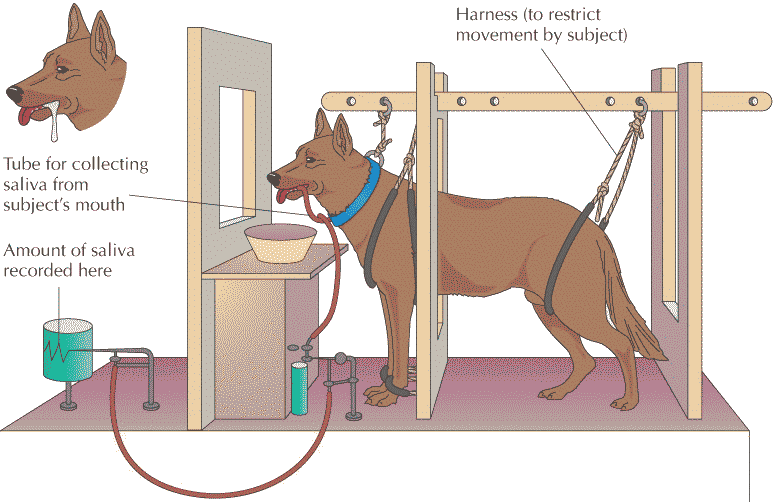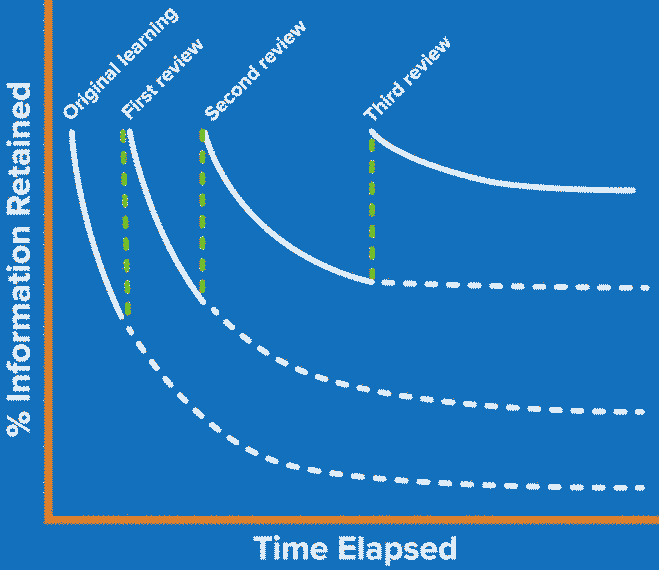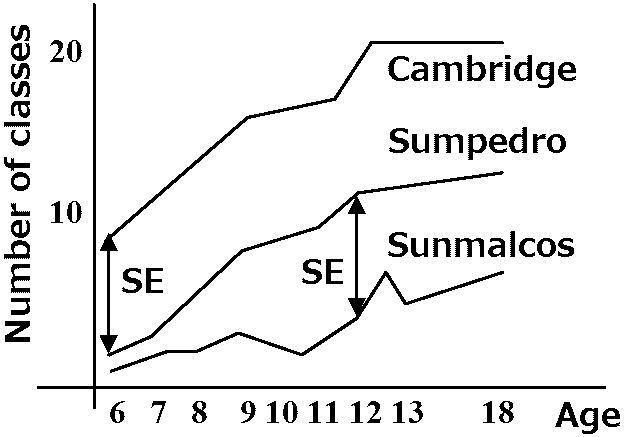(Upload on July 9 2014) [ 日本語 | English ]
Mount Usu / Sarobetsu post-mined peatland
From left: Crater basin in 1986 and 2006. Cottongrass / Daylily
Historydevelped in Egypt, Persia, Greece, China and India at early stagesFechner, Gustav Theodor (1801-1887) 1854 experimental study - prototype of signal detection theory Wundt, Wilhelm Maximilian (1832-1920): a father of modern psychology 1879 established the first psychological laboratory at the University of Leipzig = symbolic event for experimenal psychology Ebbinghaus, Hermann (1850-1909): a pioneer in the study of memoryexperimental psychology Ex. forgetting curve James, William (1842-1910)the American father of pragmatism Pavlov, Ivan (1849-1936, Russian Empire) developed the procedures associated with classical conditioning
Def. the process of an automatic, conditioned response that is paired with a specific stimulus critique of Wundt's empiricism Freud, Sigmund Schlomo (1856-1939) the founder of psychoanalysis (精神分析学) |
analytical psychology Freud vs Jung Gestalt psychology (Gestalt-Theorie)Wertheimer, Max (1880-1943)Koffka, Kurt (1886-1941) Köhler, Wolfgang (1887-1967) von Ehrenfels, Christian (1859–1932) BehaviorismWatson, John Broadus (1878-1958)Skinner, Burrhus Frederic (1904-1990) Genevan schoolPiaget, Jean William Fritz (1896-1980)Soviet Marxist psychologyCognitivism |
Every behavior has causes. However, it is very difficult to understand it.
Unconditioned response (無条件反応)occurring with no learningConditioned response (条件反射)occurring after learningconditioned stimulus: a stimulus that eventually triggers a conditioned response → an acquired response that is under the control of (conditional on the occurrence of) a stimulusEx. If you are bitten by a barking dog, you may experience feelings of fear and anxiety whenever you hear barking |
Pavlov: Pavlov's dog
food = unconditioned stimulus → salivating for food = unconditioned response ringing = conditioned stimulus → salivation = conditioned response |
Aspects of learning (学習の諸相)Def. memory (記憶): the psychological processes of acquiring, storing, retaining and later retrieving informationStep: encoding → storage → retrieval Zeigarnik effect (ツァイガルニク効果): people remember unfinished or interrupted tasks better than completed tasks≠ the Ovsiankina effect (Ovsiankina 1928) Behavior and learning (行動と学習)Forgetting curve (忘却曲線)1880-1885 Ebbinghauscurve showing the decline of memory retention in time Exp. the memorisation of nonsense syllables b = 100k/{(logt)c + k} ⇒ R = e-t/s (generalized equation)b: savings (%) ⇒
R: retrievability: a measure of how easy it is to retrieve a piece of information from memory
t: time (usually minutes) |
 Fig. The effects of spaced learning on memory. Curve on original learning is simple forgetting curve. Memory abnormality (記憶異常)Korsakoff syndrome (コルサコフ症候群): chronic memory disorder caused by severe deficiency of thiamine (vitamin B1)
= amnesia + paramnesia Learning conditions (学習条件)Learning principles (学習原理) |
Environment (環境) Environments for individuals |
inheritance (or heredity) and environment (遺伝と環境) → theory of interaction (相互作用理論)
Theory of heredity (遺伝理論)development = (source of development by heredity) × (source of development by act) × (source of development by environment) → Major importance = "act".Ex. 1. Heredity of mouse intelligence (Tryon 1940) Ex. 2. mouse intelligence (知性) – maze-learning
Parents: bad and good results on the maze → crossing: good-good or bad-bad
= the proportion of the brain not directly connected with either receptor inputs or motor outputs, where A is the association cortex and S is the sensory cortex
→ human shows very high ratio England: Streaming
In early time, children were divided at the ability. USA: Low of immigration - society of white race
White people looks down upon colored people and their race. Low of stopped race for stopped criminal's race. Children of black people can learn in early age. Research on family race (家系研究)= research about well-family race such as Bach, Darwin, Kano, etc.Results: Well men are born from well family race, but these data are unbelievable, because the races are curned, and those are not able to separate heredity and environment. Ex. Caricakk Family (カリカーク一族) = bad family race (many criminals) (Goddard HH)
At independence war
_____Total_____Low____Normal__Occupation, etc. There are not always explained by heredity only. Methods (assays) of twins (双子分析)1937 Newman, 1956 Burt: similarity of IQ (intelligence quotient) between twins
identical twins (一卵性双生児, the genes of them are the same) ⇔ fraternal twins (二卵性双生児, brother)
___________________________A_B__C_D
A: Number of pairs, B: Intelligence*, C: Reading/spelling*, D: mathematics*
→ not unbelievable
→ differences in IQ between the twins became large when the duration of separation was long (the maximum difference of IQ was 24) Darwin effects
Hall S = Father of developmental education (発達教育学) Table. Effects of areas on development due to the increase of the ability of human (Wheeler 1942)
Year Mean IQ
Change of society → Changes of ability of children
Table. Twins searched at Junior high
Effect of breeding in family
→ Ability of children increases (Test for ability over 100). Normal advantage is 100.
Table. Ability-Age (or school grade) connection
The same school years and not same age - Degree of ability is mostly same. 
Fig. Sumpedro = comparatively large town in country, A few go to school. Sunmalcos = small town, most of them cannot go to school. SE = school education About leaning ability → Effect of school education Home children research (Skeels & Dye 1940-50)The objectives of this study are to obtain the education effects on home children (施設児) whose development conditions are very poor. ↓ two groups One is experimental group (13 members) called A. The children who are in especially late to develop go in a home for low intelligence people. And they were took care of by girls who were low intelligence during some years from two-years old. These methods are regarded as many people around for taking care of them. (Humane environments are rich.) Another is control group (12 members) called B. They were maintained in a home. A few peoples take care of them. (Humane environments were poor. After those periods, the same environments were given to two of them.A: They increased their IQ up to 10 and 9 members increased the IQ up to 20. This is hopeful development. B: They were not able to touch with the society. After 10 years, half of A went into universities and men worked as a soldier, sailor, etc. Women became nurse, teacher, secretary and marriage. Half of B were in a home, 2 members got married but 1 is divorced. Some people got work, e.g., washer, and worker. Results and conclusion:
Humane environments should be rich - need communication to develop the ability home: environment changes are poor Effect or influence of ENV - they are not direct touch, they get media of action. Effects of learning in the early stages of development(学習の発達初期における効果) Learning is greatly important in the early stages of development.Ex. Lee (1951) Ex. study on wild-man (or wild-child) (野生児研究) Inner motive (内発的動機) for condition of development and learning
catching to classical learning is outer motive (外発的動機, 学習心理学用語) = drive reduction theory (動因低減説)
1) pain, stimulation
Push and then open the door
In accident, the door opened and went to the next room. This is one of the learning for avoidance to unwell tense. Lamp lighted before the electric shock was given. Thereafter, mouse went to the next room to avoid the shock. Lamp hits (case 3)
a) hungry - unwell tensed condition |
The principle is the same for human.
1) Human (animal) is inactive existence. → outer motive (They dislike to do it.) Experiment to motive reduction theoryEx. Puzzle experiment (conducted by Harlow)
Prosperous to intelligent curiosity - Intelligent growth is large.
_______________________Normal Late Home
→ normal child - choose left, weak-minded child - choose right Changing IQ of child by mother and father (Sato & Miyaki 1980)
IQ (4 age) IQ (5 age) IQ (6 age) Mother-child interference and mother-child behavior: one year before elementary school entrance. consideration responsibility self-confidence self-sufficient maintenance approach independence Sensitivity +0.54a +0.30c +0.63a +0.28c +0.28c +0.29c Interfere -0.45b -0.43b -0.54a -0.56a -0.52a -0.55a Involve -0.49b -0.53a -0.55a -0.42b -0.60a a: P < 0.001. b: P < 0.01. c: P < 0.05 Feature of child behavior and mother or father approach (1st year of elementary school)
5-6 ages → parent: positive effect on child growth
| + Experimental examples (Lepper) for 3-5 aged children in a kinder garden
A: reward with notice__B: reward__C: no reward
Children draw pictures during free time.
When they don not receive reward, they do not draw any pictures. - Notice: minus effect
exogenous effect has two senses
Puzzle_________Time 1 (1st time)_Time 2 (2nd)_Time 3
Reward = $1 Materials - university students
repeatedly failed in the easy tasks → can not solve the tasks they have ever done (cf. also can been seen the avoidance learning of dogs) Experiments conducted by Duweck
Materials: school children - They design by brick.
1. problem is difficult. Others loose a mind to be short of effort (for their ability) Source of failure (原因帰属)Curiosity (好奇心)
Developing process of intelligent ability→ Development theory proposed by Piaget (ピアジェの発達理論)
function___→__function
|
Perception developed also by early learning (vision)Stratton, George Malcolm (1865-1957, USA)1896 inverted-glasses experiments (3 days)
upside-down and leftside-right goggles, worn by himself
no obstacles for life = used to wear the glass by the 8th day |
Ames Jr, Adelbert (1880-1955, USA)
an image on, e.g., a flat piece of cardboard that seems to be a rectangular window but is, in fact, a trapezoid 1951 situational (prototype of figural after-effect or Gibson effect) 1953 rehabituation |